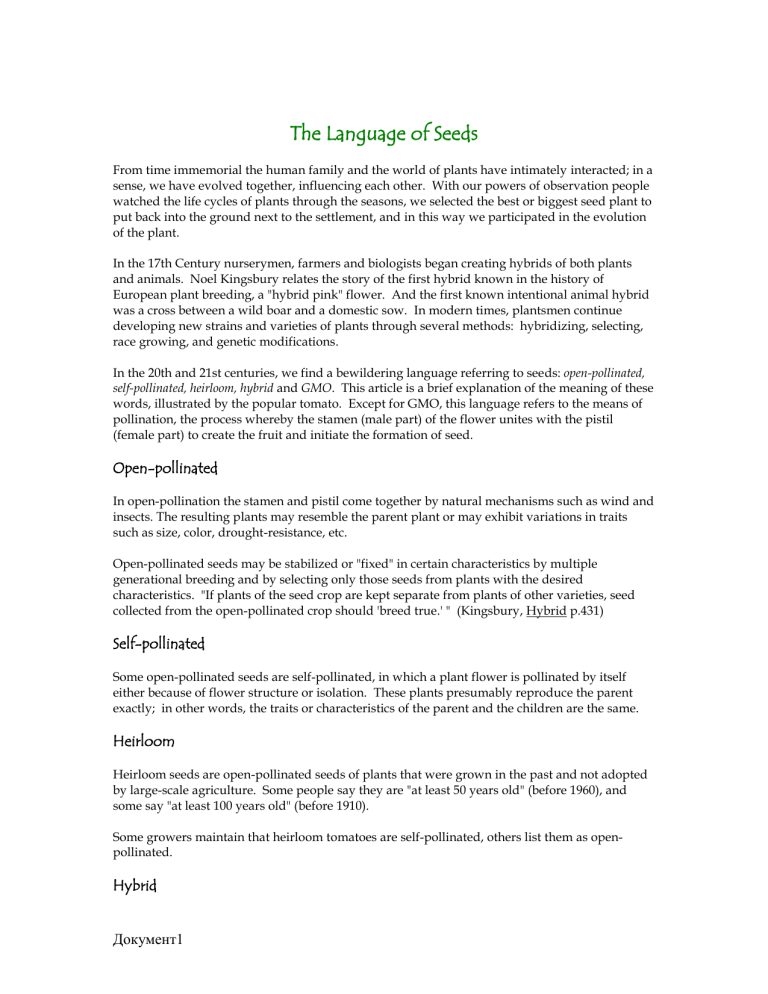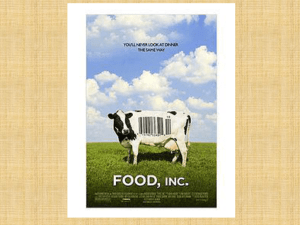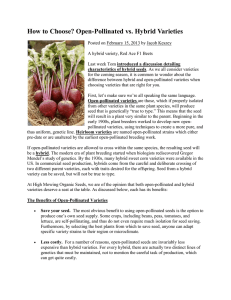Language of Seeds

The Language of Seeds
From time immemorial the human family and the world of plants have intimately interacted; in a sense, we have evolved together, influencing each other. With our powers of observation people watched the life cycles of plants through the seasons, we selected the best or biggest seed plant to put back into the ground next to the settlement, and in this way we participated in the evolution of the plant.
In the 17th Century nurserymen, farmers and biologists began creating hybrids of both plants and animals. Noel Kingsbury relates the story of the first hybrid known in the history of
European plant breeding, a "hybrid pink" flower. And the first known intentional animal hybrid was a cross between a wild boar and a domestic sow. In modern times, plantsmen continue developing new strains and varieties of plants through several methods: hybridizing, selecting, race growing, and genetic modifications.
In the 20th and 21st centuries, we find a bewildering language referring to seeds: open-pollinated,
self-pollinated, heirloom, hybrid and GMO. This article is a brief explanation of the meaning of these words, illustrated by the popular tomato. Except for GMO, this language refers to the means of pollination, the process whereby the stamen (male part) of the flower unites with the pistil
(female part) to create the fruit and initiate the formation of seed.
Open-pollinated
In open-pollination the stamen and pistil come together by natural mechanisms such as wind and insects. The resulting plants may resemble the parent plant or may exhibit variations in traits such as size, color, drought-resistance, etc.
Open-pollinated seeds may be stabilized or "fixed" in certain characteristics by multiple generational breeding and by selecting only those seeds from plants with the desired characteristics. "If plants of the seed crop are kept separate from plants of other varieties, seed collected from the open-pollinated crop should 'breed true.' " (Kingsbury, Hybrid p.431)
Self-pollinated
Some open-pollinated seeds are self-pollinated, in which a plant flower is pollinated by itself either because of flower structure or isolation. These plants presumably reproduce the parent exactly; in other words, the traits or characteristics of the parent and the children are the same.
Heirloom
Heirloom seeds are open-pollinated seeds of plants that were grown in the past and not adopted by large-scale agriculture. Some people say they are "at least 50 years old" (before 1960), and some say "at least 100 years old" (before 1910).
Some growers maintain that heirloom tomatoes are self-pollinated, others list them as openpollinated.
Hybrid
Документ1
Hybrid seeds are created through a cross by natural means between two parent plants.
Hybridization can occur in the wild, or in your garden, or it can be arranged by humans.
Interested in new flower colors, growers and gentleman farmers in Europe and America first created hybrid plants in the 17th Century. An unexpected result was that hybrid plants generally proved to be more vigorous than their parents.
Parent plants of vegetables are crossed to produce certain other desired characteristics, such as early bearing (Early Girl tomato), disease resistance, color, shape (Sweet 100 tomato), sweetness, etc. The resulting hybrid plants will exhibit these traits. Some catalogs may show these as "F1
Hybrid." ("F1" refers to the seed being the first generation cross.) The seeds developed on hybrid plants are not sold, as they do not consistently reproduce true, but will produce plants with the grandparents' characteristics.
Growers have to buy fresh seed of F1 hybrids every year, or hybridize their own seed.
GMO
GMO refers to "Genetically Modified Organisms" (also called GE or "Genetically Engineered".)
In a genetically modified organism, the gene has been altered in a laboratory; with technology, the genes inside the nucleus, which is inside the cell, are altered. In succeeding generations the
"modified" plant may reproduce by natural means.
The technology of genetic engineering was first used in 1978 to create insulin (approved for release in 1982.) In agriculture, the first expression of GMO technology was the development of herbicide-resistant tobacco in 1986. Since the 1990's, genetically engineered corn and soy are widely planted in the United States, along with many other GE crops. A GE tomato developed in
Britain for longer shelf life (FlavrSavr) has been taken off the market. GMO in agriculture focuses on drought tolerance, herbicide resistance, growth rate, and yield.
The use of genetically engineered plants is highly controversial because of many issues: environmental concerns, legislative control and regulation (or lack of) by government, the application of patent law granting control to one large company, long term health effects on humans, animals, insects, and many other issues. Practices of industrial agriculture, e.g. monoculture vs. diversity, are linked to, but not necessarily tied to, hybrid and GMO seed production.
In our time concerns have been raised about long-term health issues from eating GMO products, either due to the "carrier" used in genetic modification technique, which is in the biological form of a virus, or to the herbicidal agent incorporated in the genes.
Concerns of environmentalists and organic farmers focus on resulting effects from herbicide resistant strains (over time weeds evolve which are immune to the herbicide), and the unknown consequences as pollen of genetically engineered plants escape to neighboring fields and the wild. These and other developments from genetic engineering permanently alter and disrupt the life of the soil, patterns of interdependence between pollinators and plants, and ultimately the entire web of life.
Garden wise, earth wise.
Документ1
Written by Ellen Solomon, Certified Arborist, Horticulturist and Landscape Designer.
Information from Kingsbury, Noel; Hybrid, University of Chicago Press, 2009; Hartmann,
Hudson et. al. Plant Propagation, Prentice Hall, 7th Ed. 2002; and Peaceful Valley, Territorial
Seeds. A Publication of NorthBayHorticulture, Petaluma, CA November, 2012.
Документ1









